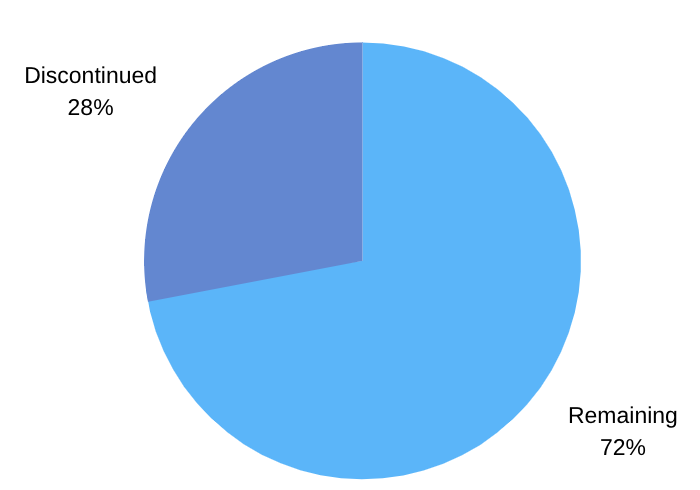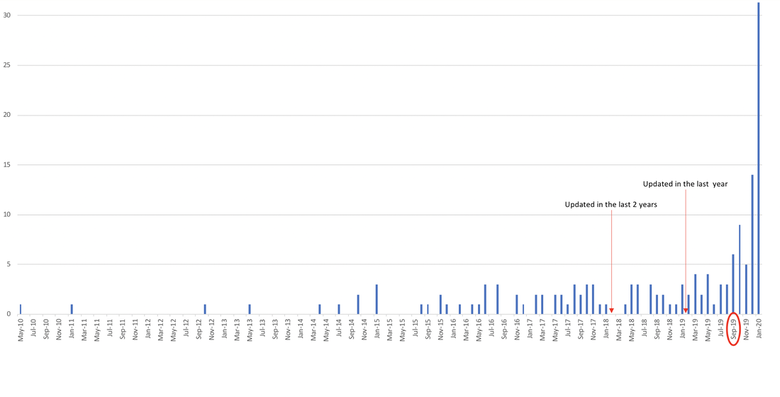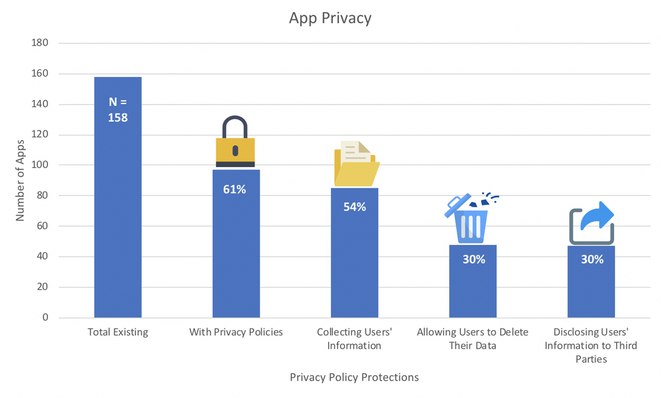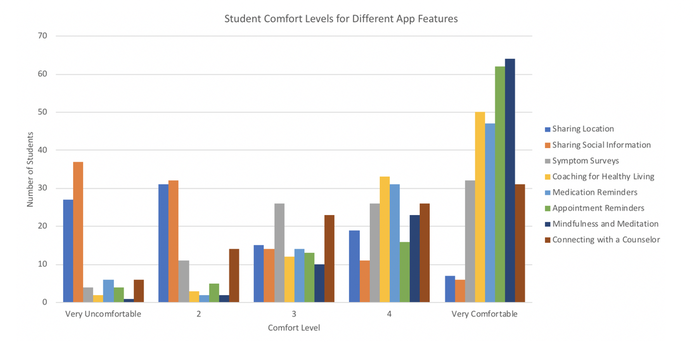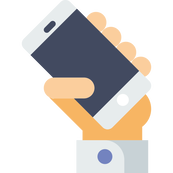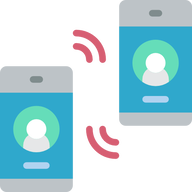|
Digital mental health resources for college students:
Phase 1: What digital resources are colleges currently offering students? Phase 2: What do students want to see in mental health apps? Phase 3: A trial of the mindLAMP app with 100 students for one month. mindLAMP: how the mindLAMP app can serve colleges upon their return to operations during the COVID-19 pandemic. |
Phase 1: What digital mental health resources are colleges offering to students?
|
Colleges are increasingly turning towards digital solutions, namely apps, to help manage the increasing number of students seeking mental health services on campus and alleviate the burden on their counseling center. An analysis of the mental health apps advertised to students by 60 college counseling centers revealed that a total of 218 unique apps were suggested to students. Of these, many apps were out of date, unsafe, or even discontinued.
Of the 218 total suggested apps, 28% were no longer available in any app marketplace.
|
Among the existing apps, many are out of date.
|
Generally, apps should have been updated within the last six months to be considered current. At the time of this analysis, only 44% of the existing apps had been updated within the last 6 months. Additionally, only 54% had been updated within the last year.
|
Privacy and safety concerns exist among school suggested apps.
|
The 158 existing apps had some serious privacy concerns. Only 61% of these apps had a privacy policy. 54% of those existing apps stated they collected users information, but only 30% of these existing apps allowed for users to delete their data. Finally, 30% of these existing apps explicitly stated that they disclosed user information to third parties.
|
Phase 2: What do college students want in a mental health app?
While mental health apps have the potential to help college students and reduce the clinical load from college counseling centers, student engagement with these apps remains low. A series of 100 interviews with college students explored why students are not using mental health apps and their suggestions for features that would improve their engagement.
Students expressed that their decisions to download mental health apps and which apps to download centered around the cost of apps and their school stress.
Students' desires for more engaging apps fell into a few categories: data privacy, modern user interfaces, credible and useful information, and customizable functionality.
I think it should be made clear exactly how the app is using the data --I’m okay with it as long as the app is transparent. |
1. Data Privacy
Students expressed varying levels of concern surrounding their data privacy, however, most agreed that apps should be more transparent about how user data was used. This included suggestions for more comprehensible privacy policies, and a better explanation of why apps required access to data on their phones. Lack of trust in apps or feeling suspicious of how apps used personal data often led students to delete apps. |
The better it looks, the easier it is to use, the more colors, the more likely I am to download it. |
2. User Interface
Students expressed that in order to keep them engaged and coming back to an app, it should be easy to use and involve quick interactions. Apps that had crowded layouts or were difficult to navigate were quickly abandoned. A simple and clean appearance was most appealing to college students. |
What I dislike is so many appear to be legit resources, but it would be better to have an app that has some research base on what they’re trying to sell you on. |
3. Credibility and Utility
Students realize that anyone can create an app and put it out on the app marketplace as a resource. For this reason, students expressed skepticism about some mental health apps and preferred apps from credible sources or with references to research. |
How do I know that will help me specifically? I know it helps a ton of people but for me it’s different. How do I know that’ll help me? |
4. Customization
Students want their mental health apps to be customized to their needs. Whether this be through the option to toggle features on or off based on their preferences, or schedule notifications around their own daily routine, students expressed the customizability of mental health apps was key to maintaining lasting engagement. |
|
App Features
Students also discussed what app features they were looking for in a mental health app and which features they would rather omit or turn off. Overall, students were enthusiastic about mindfulness and meditation features, appointment and medication reminders, symptom surveys, and coaching for healthy living, but were more hesitant about sharing location and social information with apps. |
Phase 3: Implementation of the mindLAMP app with 100 college students.
In this ongoing research project, 100 college students used the mindLAMP app for 4 weeks to monitor moods and mental health symptoms during the COVID-19 pandemic. Passive data measures such as accelerometer and screen-time were also collected by the mindLAMP app in order to understand how activity and phone use behavior was associated with mental health during the COVID-19 pandemic.
MindLAMP
|
The mindLAMP app consists of four pages, spelling the acronym LAMP.
First, in the Learn section, users can access helpful mental health resources and tips. In the next section, Assess, users can complete surveys. These surveys are customized to address the specific needs of the user. The third page, Manage, has activities and techniques to manage symptoms such as a mindful breathing activity, a journaling feature, and more. Finally, the Prevent page shows all of the data from the surveys the user has been completing. On this page, the user can communicate with their clinician or researcher as well as see their own survey responses. |
The survey functionality allows administrators to ask users anything. For schools returning to in-person classes in the fall, mindLAMP surveys can monitor COVID-19 symptoms as well as a variety of mental health indicators for students.
|


